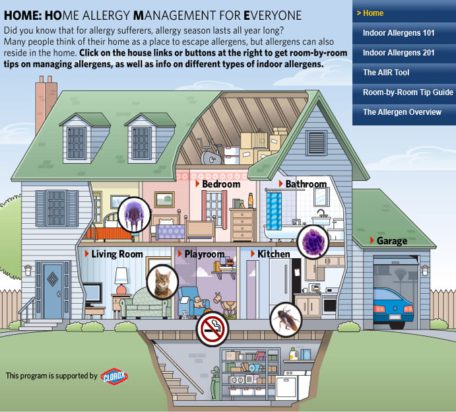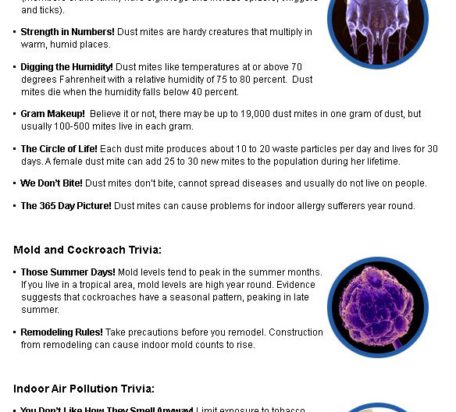Use HOME to learn about the different types of indoor allergens and to receive room-by-room tips on managing allergies. Did you know that for allergy sufferers, allergy season lasts all year long? Many people think of their homes as a place to escape allergens, but allergens can also reside in the home.

Indoor Allergens 101
Did you know that for many people, allergy season lasts all year long? While many think of their home as a place to escape allergens, they do not realize that allergens that can cause allergic reactions also reside in the home.

Indoor Allergens Trivia
Test your knowledge of indoor allergens with trivia about dust mites, mold, cockroaches, and indoor air pollution.
Room-by-Room Guide
Did you know that on average people spend one-third of their lives in their bedroom? The following are some tips to manage indoor allergens like dust mites and their waste, animal allergens, mold spores and cockroaches in the bedroom, to help you get your Z’s without the sneeze.
With so much family time spent in the living room, managing allergens in this room is critical. The following are suggested tips to help keep life in the living room – not the tissues.
For allergy sufferers, a clean kitchen makes a big difference. Take these simple steps at home to cook up an allergen-friendly kitchen.
Allergen Overview
The most common substance to cause allergic reactions within house dust is dust mites and particles. At least 45 percent of young people with asthma are allergic to dust mites.
Did you know that more than 50 percent of U.S. households have a dog or cat? About 10 percent of the population may be allergic to animals.
Mold that you find in your house comes either from outside or it can grow inside the home. If there is a lot of mold outside, some of it can come inside, particularly if you leave windows open.
Did you know that you are more likely to have dust that contains cockroach particles if you live in an older multifamily home?
Tobacco smoke, wood smoke, cooking exhaust, aerosols and more are non-allergic triggers that can cause similar symptoms to allergies, but lack the immune response that typically occurs when you sneeze or wheeze inside the home.
